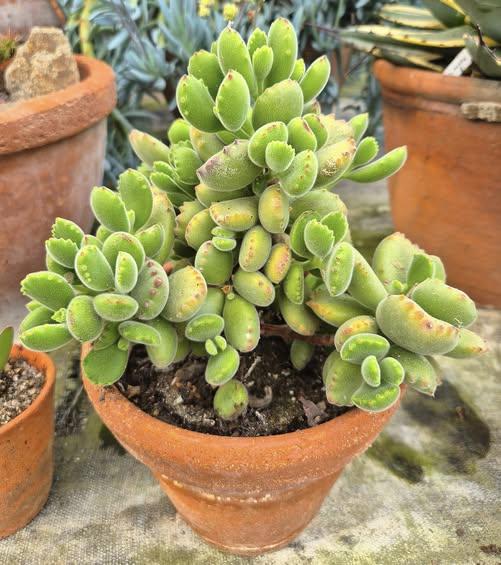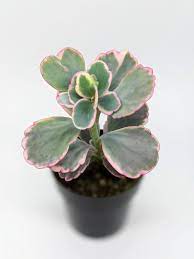Bear’s Paw Plant🐾 Cotyledon tomentosa**
The Bear’s Paw Plant is a whimsical, fuzzy-leaved succulent that charms everyone who sees it. Scientifically known as *Cotyledon tomentosa*, it gets its nickname from its distinctive plump leaves that resemble tiny bear paws—complete with soft “claws” at the tips. Native to South Africa, this delightful plant is beloved not only for its adorable appearance but also for its resilience and easy-care nature. Whether you’re styling cozy shelves, assembling a succulent bundle, or simply looking for a playful houseplant, Bear’s Paw brings warmth and texture to your collection.
—
#### 🌿 **Care & Growth**
This succulent forms compact clusters of thick, oval-shaped leaves covered in a soft, velvety fuzz. At the leaf tips, you’ll notice subtle indentations or “claws” that mimic a bear’s paw—hence its name. In ideal conditions, mature Bear’s Paws can produce vibrant orange-red bell-shaped flowers that hang gracefully from upright stalks.
Growth is moderate. With good care, it can reach 6 to 12 inches tall and expand outward into a lush mound of fuzzy green paws.
—
#### 💧 **Watering**
Bear’s Paw prefers a “less is more” watering approach:
– Let soil dry completely between waterings.
– Water every 12–16 days during spring and summer.
– In fall and winter, water only once a month or when the leaves start to wrinkle.
– Avoid watering directly on the leaves.
– Too much moisture can cause leaves to drop or lead to root rot.
Fuzzy leaves are prone to rot if overly wet, so err on the side of under-watering.
—
#### ☀️ **Light & Temperature**
Light plays a major role in this succulent’s color and health:
– Needs bright, indirect light or morning sun.
– Direct afternoon sun may scorch its soft leaves.
– Outdoors, it thrives in partial shade in warm climates.
– Ideal indoor position: near an east or south-facing window.
Temperature:
– Preferred range: 18°C to 26°C (65°F to 78°F).
– Not frost-tolerant—bring indoors below 10°C (50°F).
– Sudden cold can cause leaf drop or damage.
—
#### 🌱 **Soil & Repotting**
Like all succulents, Bear’s Paw demands excellent drainage:
– Use cactus/succulent mix enhanced with pumice or perlite.
– Shallow containers with drainage holes are best.
– Repot only when root-bound, typically every 2 years.
– Be gentle when handling, as leaves bruise easily.
Avoid heavy soils or pots without drainage—they increase the risk of rot.
—
#### 🌸 **Fertilizer Routine**
Feed sparingly for strong growth:
– Apply a diluted balanced succulent fertilizer monthly during active growth (spring to early fall).
– No fertilizer needed during dormancy in winter.
– Avoid high-nitrogen fertilizers, which encourage excessive leaf growth at the cost of color and texture.
—
#### 🐾 **Pet Safety**
This plant is considered mildly toxic if ingested by pets or children. The leaves contain compounds that may cause irritation or stomach upset.
—
#### 🎨 **Styling & Display Ideas**
Bear’s Paw is a fantastic plant for:
– Children’s rooms or whimsical displays thanks to its soft, cute shape.
– Small ceramic planters on shelves or desks.
– Succulent gift boxes with fun, quirky themes.
– Cozy terrariums or grouped arrangements with pastel succulents.
Pair it with soft-colored stones or textured pots to highlight its fuzzy, charming foliage.
—
From its playful appearance to its dependable nature, the Bear’s Paw Plant combines novelty and practicality like few other succulents. It’s a perfect choice for beginner gardeners, seasoned collectors, and creatives seeking that one botanical accent that never fails to delight.





Reviews
There are no reviews yet.